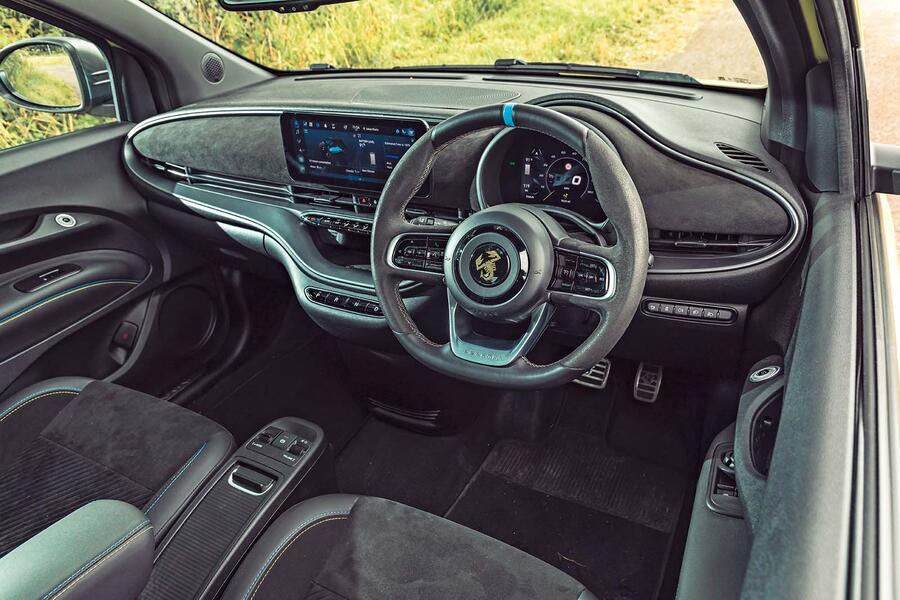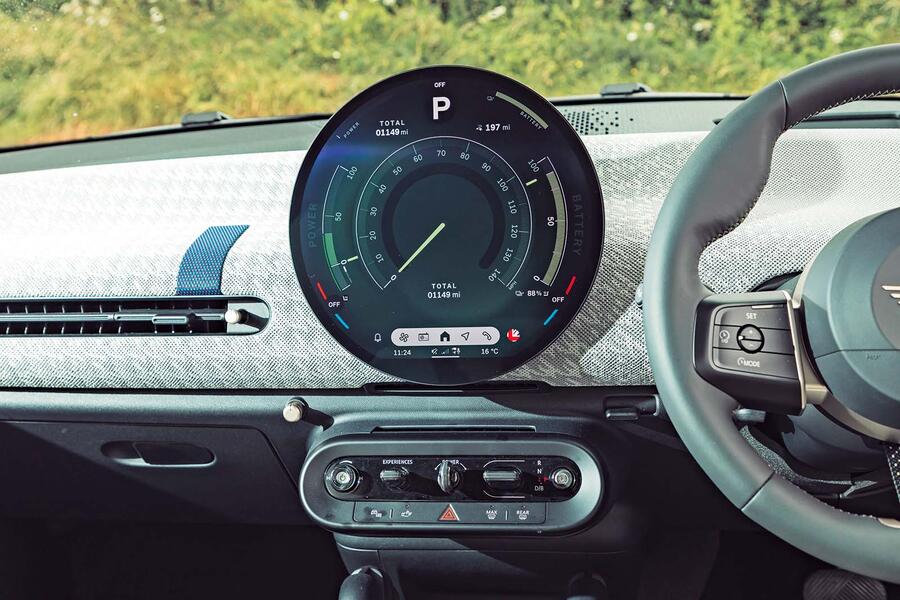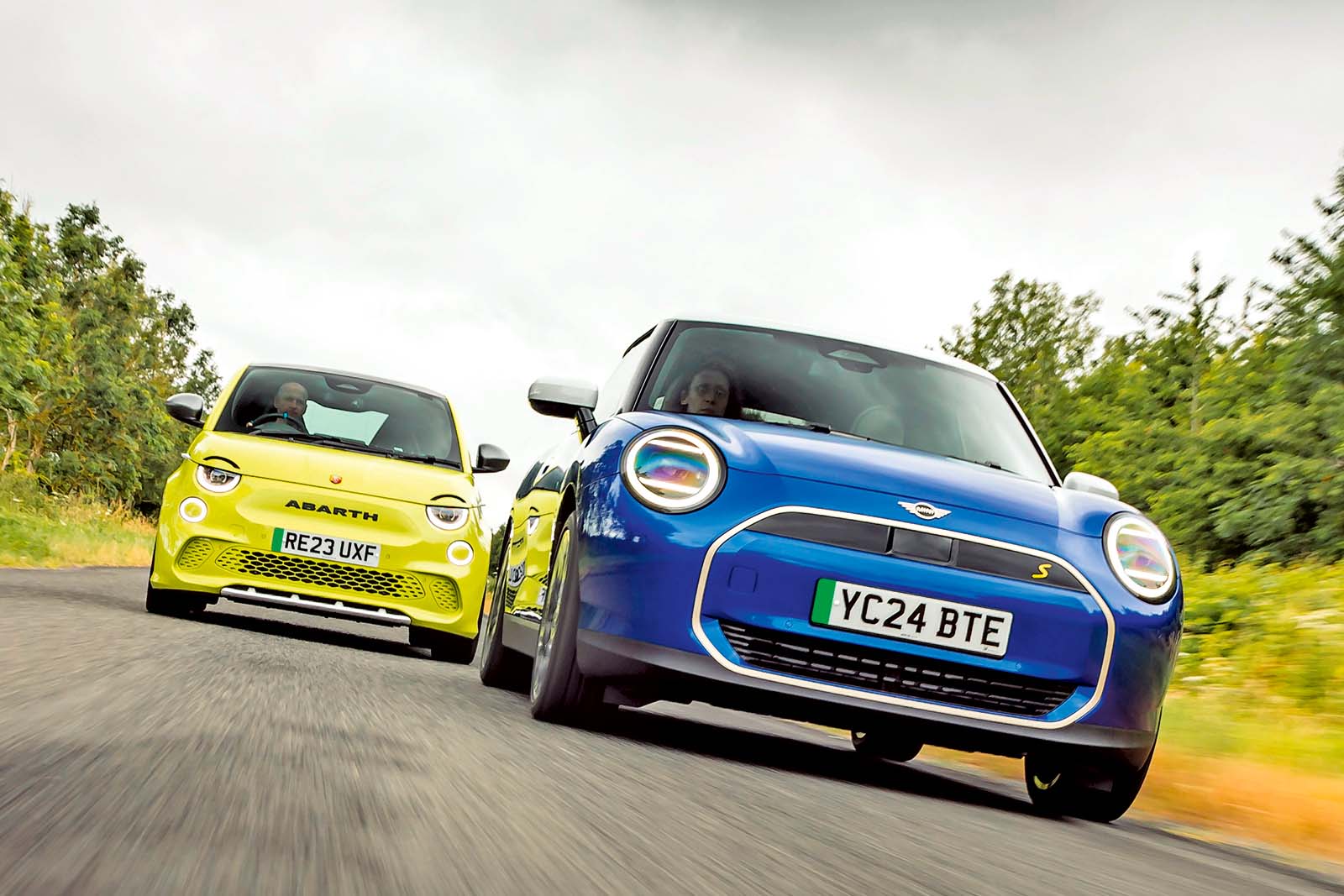There’s that range, which comes not only from a bigger battery (49.2kWh versus 37.3kWh) but also because the Cooper is slightly more efficient in regular use, returning 4.2mpkWh rather than 4.0mpkWh in similar driving conditions. It charges a bit more quickly too.
Mini Cooper SE vs Abarth 500e: interior

Inside, it feels much more like the small premium car you expect for the price, whereas the Abarth has stronger ‘tarted-up city car’ vibes. Sure, the Italians know how to wield the Alcantara, and they’ve deployed it liberally and successfully, but it can’t cover up all the hard plastics or that compromised driving position.
There’s evidence of cost cutting in the Cooper too, mind. I bet that getting rid of most of the buttons and the separate gauge cluster saves Mini a fair few quid; likewise the simpler seat design, which has lost a lot of the adjustability you got in the previous generation.
But your eye is instantly drawn to the coarse-knit fabric on the dashboard and doors, and the big round screen, with its cheery graphics. The buttons, stalks and handles that do remain have the haptics to make the Mini feel like a quality item. Its driving position might be higher than in the old car, but it’s miles more comfortable and purposeful than the 500e’s.
Mini Cooper SE vs Abarth 500e: infotainment systems
I’m conflicted about the infotainment systems. I’m loath to criticise the Abarth’s, which looks fine and works quite well, as these things go, whereas the Mini’s has its fair share of usability problems. However, in the Mini it feels like an integral part of the car, an extension of the design philosophy, rather than a parts bin screen plonked on top of the dash.


